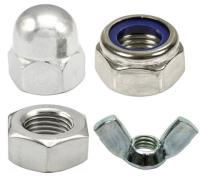 Add My Company
Add My Company
Sign In
FIXINGS & FASTENERS IN ARCHITECTURE
07-05-2021

Whether you are interested in modern, classic or historic architecture, or all of them, there are two key things that any building needs to have; a solid structure and a pleasant appearance. Increasingly it might appear that architecture is more about style than substance, but a building has to be robust and to stand the test of time, in order for it to be appreciated for its appearance, or as a piece of significant architecture.
Looking back through history, architecture, as the planning, designing and construction of buildings, has always had to pay close attention to fixings and fasteners and how these have changed and been adapted to suit different methods and different materials.
Architecture can incorporate the internal and external features and structure of the home, or it can include commercial buildings of any shape or size, or public buildings that we see every day or in famous locations. So architecture is everywhere in our lives and encompasses many different styles, eras and cultures.
Typical fixings and fasteners used in architecture
Fixings and fasteners therefore, are a universal feature which are as important as they are adaptable, in that they carry out the same function whether they are holding together external or internal features.
So fixings and fasteners need to be the right size and shape, and in terms of appearance, your decision can also be critical.
Typical fixings and fasteners in architectural construction are wood screws and hexagon screws. Wood screws are used for joining two pieces of wood together, and hence aren’t always seen on the exterior of a building, but that makes them no less important when discussing the interior design of a building.
Wood screws have a pointed end which is designed to grab the wood in a way that ensures better security, whilst not resulting in splitting or cracking. They are also preferable to using adhesives in construction, because they allow the wood to expand and contract – as it naturally does – whilst still holding their position. This is not possible with adhesives.
Our range of fixings and fasteners
In terms of appearance, the end of the wood screw can be rounded, so that it protrudes from the surface, ie. where appearance is not too important, or it can be flat-headed, and therefore is flush to a surface, where appearance is more of a factor.
The other popular fastener used in architectural construction is the hexagon screw. This is very popular in construction and engineering, because its hexagonal-shaped head enables greater torque strength to be applied, and hence it provides a stronger fastening.
Variations of the hexagon screw are again related to appearance. A plain steel screw would be the preferred choice for an internal fixing, whilst external fixings could be carried out using a stainless steel or galvanised screw, because their appearance wouldn’t deteriorate, despite exposure to the elements, sometimes over a very long time.
Always take professional advice when choosing your fixings and fastenings for architectural design. There is so much choice available it can be confusing. But most importantly, there is so much variation in the task you can be carrying out. It is critical to that project’s success that you choose the correct fixing or fastening, both structurally and in terms of appearance, so get good advice and your architectural project will be a great success.
For more information on FIXINGS & FASTENERS IN ARCHITECTURE talk to Kayfast Ltd
Enquire Now
List your company on FindTheNeedle.

